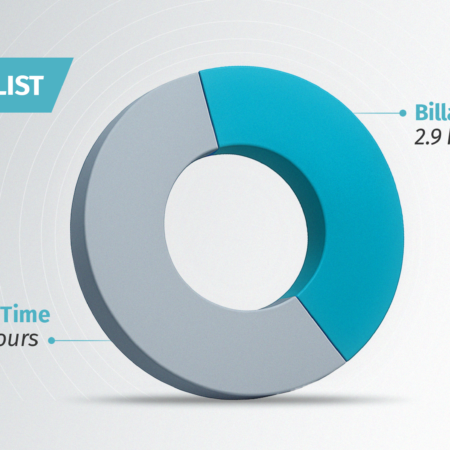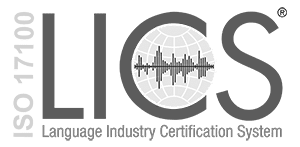Imagine a world where language barriers are effortlessly dismantled. A.I. translation tools are already transforming this vision into reality, offering unprecedented speed and efficiency.
Yet, without the nuanced touch of human expertise, these tools risk missing critical cultural and contextual subtleties.
Enter Human-in-the-Loop (HITL) translation—a synergistic approach that combines the best of A.I. and human insight, ensuring not just accuracy, but also the cultural relevance essential for global communication success.
Today we dive into how this powerful collaboration is revolutionizing translations—for the better.
- The Human Touch: Ensuring Accuracy in A.I. Translations
- Example Scenario: A Case of Legal Consequences
- Balancing Automation and Expert Oversight: The Golden Ratio
- Overcoming Challenges: Navigating the Complexities of A.I. Translations and Human-in-the-Loop
- The Future of Translation: Human-A.I. Collaboration Redefined
KEY TAKEAWAYS
- Balancing automation with expert oversight ensures translations are precise, culturally sensitive, and suitable for complex legal, financial, and technical documents.
The Human Touch: Ensuring Accuracy in A.I. Translations
In today's rapidly globalizing world, the need for accurate and efficient translation has become more critical than ever. And while advancements in artificial intelligence (A.I.) have revolutionized the translation landscape, there's still no substitute for the precision and cultural understanding that human translators bring to the table.
DID YOU KNOW?
By 2025, the global machine translation market is expected to reach $983.3 million, growing at a CAGR of 14.6% from 2020 to 2025?
Source: Grand View Research
Despite the impressive strides made by A.I. in natural language processing (NLP), human intervention remains crucial in ensuring the accuracy and quality of A.I. translations.
Human translators possess a deep understanding of cultural nuances, idioms, and context that can be challenging for A.I. systems to grasp. After all, language is more than just words; it's a reflection of a culture's history, values, and way of life.
Human translators, with their years of experience and expertise, can capture these subtle intricacies and convey them accurately in the target language.
“While advancements in artificial intelligence (A.I.) have revolutionized the translation landscape, there's still no substitute for the precision and cultural understanding that human translators bring to the table.”
Moreover, errors in A.I. translations can have significant consequences—especially in areas where precision is paramount. In legal documents, for instance, a single mistranslation can have far-reaching legal implications. Similarly, in medical translations, an inaccurate translation can lead to misdiagnosis or even life-threatening situations.
Human oversight serves as a safety net, identifying and correcting errors, misinterpretations, or ambiguous phrases in A.I.-generated translations, ensuring that the final output is accurate, reliable, and culturally appropriate
“Human oversight serves as a safety net, identifying and correcting errors, misinterpretations, or ambiguous phrases in A.I.-generated translations, ensuring that the final output is accurate, reliable, and culturally appropriate.”
Example Scenario: A Case of Legal Consequences
In a bustling international business hub, a multinational corporation was finalizing a critical merger agreement with a local company in a foreign country. The legal team relied solely on A.I.-powered translation tools to quickly translate extensive legal documents into multiple languages for negotiation purposes.
The A.I., known for its efficiency, translated the complex legal jargon swiftly, presenting a seemingly coherent document ready for review.

However, during the negotiation process, a discrepancy emerged in the translated version of a key clause related to intellectual property rights. The A.I. had translated a crucial term—pertaining to exclusive licensing rights—ambiguously, leading to confusion between the negotiating parties. This misinterpretation threatened to derail the merger talks, as both sides disagreed over the intended meaning.
Recognizing the urgency and complexity of the situation, the legal team swiftly brought in human translators specializing in legal terminology. These translators meticulously reviewed the A.I.-generated translations and identified the critical error in interpretation.
"This hypothetical scenario underscores that while A.I. excels in rapid processing and broad-scale translation tasks, human expertise can greatly enhance its comprehension of nuanced legal language."
They clarified the precise legal terminology and its implications in the target language, ensuring that both parties understood the clause accurately. Ultimately, the merger proceeded successfully, facilitated by the collaboration between A.I. technology for efficiency and human translators for precision and legal accuracy.
The intervention of human translators not only resolved the immediate dispute, but also highlighted the indispensable role of human oversight in legal translations.
This hypothetical scenario underscores that while A.I. excels in rapid processing and broad-scale translation tasks, human expertise can greatly enhance its comprehension of nuanced legal language.
Balancing Automation and Expert Oversight: The Golden Ratio
Achieving optimal translation results requires balancing automation with human expertise. A.I. offers unparalleled speed and efficiency, while human translators provide irreplaceable precision and cultural understanding. Finding this balance is key to optimal outcomes.
Combining A.I. and human strengths creates a dynamic synergy that elevates translation quality. A.I. swiftly handles vast amounts of data, enabling rapid translation. Human translators then refine the A.I.-generated output, ensuring accuracy, consistency, and cultural appropriateness. This hybrid approach yields precise and authentic translations.
“While A.I. has made remarkable progress in translation, it still lacks the nuanced understanding of cultural context and idiomatic expressions that human translators bring to the table. The human element remains crucial for ensuring not just linguistic accuracy, but cultural appropriateness."
– Dr. Emily Bender,
Professor of Linguistics at the University of Washington
Integrating A.I. and human expertise optimizes productivity without compromising quality. A.I. automates repetitive tasks, freeing human translators to tackle complex linguistic challenges. This collaboration reduces turnaround times, allowing businesses to meet tight deadlines without sacrificing quality.
Human-A.I. collaboration also maintains high translation standards—human translators act as the final quality check, scrutinizing A.I. translations for errors, ambiguities, or cultural missteps. And finally, their expertise ensures the final output meets the highest accuracy standards and effectively conveys the intended message.
Finding the golden ratio between automation and human expertise is essential for the best translation outcomes. By leveraging A.I.'s speed and efficiency alongside human precision and cultural understanding, businesses can achieve superior translation quality.
Overcoming Challenges: Navigating the Complexities of A.I. Translations and Human-in-the-Loop
Human-in-the-loop translation—where human translators collaborate with A.I. systems—offers substantial advantages, but also presents a unique set of challenges that require careful navigation to ensure successful implementation and positive outcomes.
1. Navigating the Dynamic A.I. and Linguistic Landscape
One prominent challenge lies in the dynamic nature of A.I. technology and the ever-evolving linguistic landscape; translators must continuously upskill and adapt to keep pace with these rapid advancements.
This involves gaining a profound understanding of A.I.'s capabilities and limitations to effectively leverage its potential and identify areas where human intervention is indispensable.
2. Enhancing Collaboration Between Humans and A.I.
Another challenge revolves around fostering effective communication and collaboration between human translators and A.I. systems. To ensure harmonious teamwork towards a shared objective, clear guidelines and protocols must be established.
This may entail standardizing communication channels, precisely defining roles and responsibilities, and implementing robust feedback mechanisms to address any issues that arise during the translation process.
3. Navigating Translation Discrepancies in Human-A.I. Interactions
Managing discrepancies between human and A.I.-generated translations is another hurdle. In instances where variations occur, identifying the root cause and making informed decisions on which version to adopt becomes crucial.
This may involve analyzing the context, considering the target audience, and evaluating the potential impact of each variation. Establishing a well-defined process for resolving discrepancies helps maintain consistency and accuracy in the final translations.
4. Addressing Bias in Translation Processes
The risk of human biases infiltrating the translation process is another challenge that cannot be overlooked. To mitigate this risk, fostering diversity and inclusivity within the team of professional translators is essential.
Additionally, implementing robust quality assurance processes is crucial to identify and eliminate any instances of bias in the translations.
5. Implementing Robust Review Protocols
Finally, ensuring rigorous quality assurance processes is paramount to validating the accuracy and consistency of human-in-the-loop translations. This may encompass implementing multiple layers of review, utilizing advanced technology tools for error detection, and conducting regular audits to assess the overall quality of the translations.
Establishing clear quality standards and metrics helps maintain a high level of accuracy and meet the specific requirements of different companies and industries.
By effectively addressing these challenges, organizations can harness the full potential of human-in-the-loop translation, leveraging the strengths of both human expertise and A.I. capabilities to deliver high-quality, accurate, and culturally sensitive translations that meet the demands of the global marketplace.
The Future of Translation: Human-A.I. Collaboration Redefined
As the world shrinks and communication becomes a matter of a few clicks, the need for accurate and culturally attuned translations has skyrocketed. The future of translation lies in a powerful synergy between humans and A.I.—where each party's strengths amplify the other—producing exceptional outcomes.
DID YOU KNOW?
In the 2023 European Language Industry Survey, machine translation (MT) was estimated to be used in more than 30% of professional translation businesses. Roughly 55% of academic participants project that MT will be employed in the majority of professional translation tasks by no later than 2030.
Source: POEditor
As technology accelerates, machine learning algorithms will become more refined, allowing A.I. to tackle increasingly complex translation tasks.
However, the human element will remain indispensable, particularly in ensuring accuracy and cultural sensitivity, and especially when context and nuance are paramount.
The integration of A.I. and human expertise will redefine the translation landscape. A.I. will shoulder the burden of mundane and repetitive tasks, freeing human translators to focus on the higher-order aspects of their craft—ensuring translations are not just linguistically correct, but also culturally relevant and impactful.

What’s more, as A.I. systems mature, they’ll become indispensable partners to human translators, providing real-time suggestions and helping to ensure terminological consistency.
"As A.I. translation tools evolve, the role of human translators is shifting from mere language conversion to that of cultural mediators and content curators. This evolution is creating new opportunities for linguists to add value in ways that machines simply cannot."
– Jost Zetzsche, Leading Translation Technology Consultant
This cooperative effort will not only enhance the quality and accuracy of translations, but also accelerate the process, allowing businesses to respond to market demands with unprecedented agility.
The future of translation is not about replacing human translators—it's about empowering them with cutting-edge A.I. tools. This human-A.I. collaboration will be the driving force behind the next generation of translation services, enabling businesses to communicate effectively in a borderless world.
Ready to Unlock the Power of Human-in-the-Loop A.I. Translations?
Ready to take your global communication to the next level? Discover how A.I. translations with human oversight can help you:
- Break down language barriers and connect with audiences worldwide
- Achieve unparalleled translation accuracy and quality
- Streamline your translation process for faster turnaround times
- Maintain consistency and cultural relevance across all your translated content
- And more…
Don't settle for A.I. translations alone—unlock the full potential of your global communication with our professional translation services.
Get in touch with our translation experts and start delivering perfect, culturally-appropriate content that connects with audiences around the world.

















